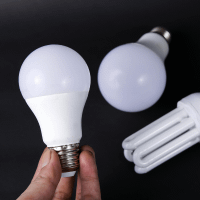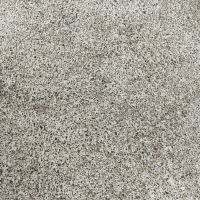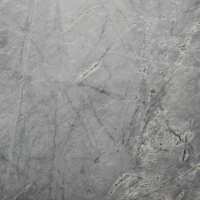Introduction
Maintaining a concrete floor finish involves cleaning, surface treatment, and regular maintenance to ensure durability and aesthetic appeal. Recent research provides practical and effective strategies for maintaining concrete floors.
Cleaning and Surface Preparation
Surface Cleaning: The key to maintaining the aesthetic and functional quality of concrete floors is a consistent and thorough cleaning regimen. Over time, dirt, dust, and debris can accumulate, potentially leading to wear and degradation of the finish. Regular cleaning not only preserves the visual appeal of the concrete but also extends its lifespan. Utilising a specialised floor maintenance machine equipped with abrasive pads or brushes is instrumental in this process. These machines are designed to effectively remove stubborn build-up and restore the gloss of polished concrete surfaces. This technique promotes cleanliness and safeguards against long-term damage, ensuring that the flooring remains in optimal condition for years to come (Stuckey et al., 2006).
Surface Modification: When it comes to enhancing the durability and functionality of concrete pavements, innovative surface modification techniques play a crucial role. One practical approach involves the application of emulsified bitumen, which significantly improves the water resistance of the concrete. This method effectively prevents water infiltration and minimizes the risk of damage that can arise from freeze-thaw cycles. Additionally, incorporating nanometer white carbon black into the concrete mix provides further benefits, including enhanced mechanical performance. This modification significantly enhances the overall resilience of the concrete, crucial for maintaining its integrity under heavy traffic and environmental stressors. As a result, these innovative surface modification techniques significantly contribute to prolonging the life of concrete pavements, ensuring they remain functional and aesthetically pleasing over an extended period (Wenzhi, 2014).
Water Retention and Stress Reduction
Water retention is crucial for maintaining the integrity of concrete surfaces, particularly during the early curing stages when the concrete is most vulnerable to environmental factors. Maintenance materials such as gauze infused with polyacrylamide and liquid paraffin have proven effective in enhancing water retention on the surface of concrete structures. This innovative approach not only helps retain moisture but also significantly distributes early shrinkage stress uniformly across the surface. As a result, it mitigates the risk of microcracking, a frequent issue encountered in large-volume concrete projects during their initial phases, as outlined in the research conducted by Cheng et al. in 2010.
Furthermore, implementing advanced sprinkling techniques offers a promising solution for managing the hydration of concrete surfaces. By utilising a sophisticated sprinkling device designed to adjust water intensity to the specific condition of the surface, it is possible to avoid the detrimental effects of excessive water application. Overwatering can lead to surface defects and compromise the overall quality of the concrete. This tailored approach ensures that the concrete surface receives the optimal amount of moisture needed for proper curing while minimising water wastage, as indicated in the findings by Guoqing and Li in 2020. By combining these methods, construction practices can achieve improved durability and longevity of concrete structures, ultimately enhancing their performance and resilience.
Temperature and Humidity Control
Humidity maintenance plays a crucial role in the preservation and proper curing of concrete. Devices designed for this purpose utilize a multi-layered approach that enhances their effectiveness. These devices typically consist of three primary layers: a water catchment layer, a foam plastic layer, and a linen layer.
The water catchment layer serves as the foundation of the system. It collects and retains moisture, ensuring that the concrete surface is adequately hydrated throughout the curing process. This moisture retention is vital because maintaining adequate humidity helps to prevent surface cracking and other issues that can arise when concrete dries too rapidly.
Above the catchment layer, the foam plastic layer adds another dimension to humidity management. This layer not only aids in moisture retention but also provides insulation. By creating a barrier, it helps in regulating temperature fluctuations, which is essential for concrete maintenance. Extreme temperature variations can adversely affect the curing process, leading to compromised structural integrity.
The topmost linen layer also plays a protective role. It helps to ensure that moisture is evenly distributed across the concrete surface while also allowing for some air circulation. This balance is essential as it helps maintain a consistent humidity and temperature level, both critical for optimal curing conditions. Through this layered approach, the devices create an environment that supports the concrete in achieving its desired strength and durability.
Using these combined layers effectively ensures that the concrete surface remains in optimal condition during the curing process. By providing consistent moisture and temperature control, the setup significantly enhances the quality and longevity of the concrete, thereby supporting essential construction and maintenance practices. The effectiveness of this method has been substantiated in previous studies, such as the work conducted by Fude in 2015, which emphasises how structured humidity and temperature maintenance can lead to superior concrete performance.
Conclusion
While these methods have demonstrated effectiveness in maintaining concrete surfaces, it is crucial to take into account the unique requirements associated with each specific concrete surface being evaluated. Various factors play a significant role in determining the most suitable maintenance strategy. For instance, the particular type of concrete, whether it is polished, stamped, or exposed aggregate, can greatly impact the choice of cleaning and sealing agents used. Additionally, environmental conditions such as climate, humidity levels, and exposure to sunlight can affect how concrete behaves over time, thereby influencing maintenance needs. This understanding empowers property owners, facility managers, and construction professionals to make informed decisions about the maintenance of their concrete surfaces.
Moreover, the level of foot traffic on the concrete surface is another critical factor that should not be overlooked. High-traffic areas, such as commercial spaces or entryways, may require more frequent and intensive maintenance than residential areas with minimal foot traffic. This variation necessitates a tailored approach to maintenance practices, ensuring that they align with the specific demands imposed by usage patterns and surrounding conditions.
Regular assessment of the concrete surface is essential to address any developing issues effectively and to refine maintenance practices accordingly. Property owners can identify potential problems early on by conducting periodic evaluations and implementing necessary adaptations to their maintenance strategies. This proactive approach not only enhances the longevity of concrete floors but also improves their overall appearance, preserving the aesthetic value of the space while ensuring that it remains safe and functional under varying conditions.






